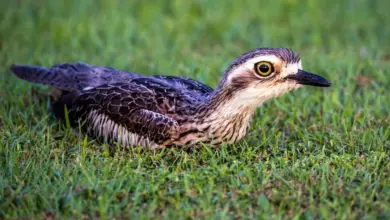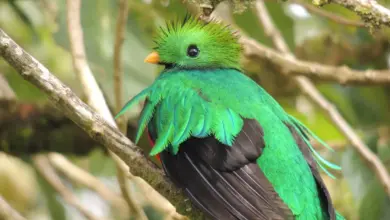Monteiro’s Hornbills
The Monteiro’s Hornbills, Tockus monteiri, is an African hornbill.
The Monteiro’s hornbill is a common endemic species of Namibia, with total population estimated on 340,000 individuals.
Description
It is a medium sized bird, with a length between 54 to 58 cm, characterized by a white belly, black back, with white spots on the wings and secondary flight feathers (shorter, upper “arm” feathers) are colored white. The outer feathers of the long tail are also white.
Females are smaller than males and can be recognized by turquoise facial skin. The eyes are black and the beak is red.
Hornbill Information … Hornbill Index of Species … Hornbill Species Photo Gallery
Feeding / Diet
Unlike other members of the family, which are omnivorous, the Monteiro’s hornbill feeds exclusively on insects and other small arthropods. Its habitat is the savannah and dry thorn fields of NW Namibia.
Breeding / Nesting
In springtime, Monteiro’s hornbills migrate to the southern Windhoek region for nesting. Due to the arid environment, drinking is not a vital necessity for this species.
They breed in the end of good rainy season, laying 3 to 5 white-greyish eggs, hatched after about 45 days. The nest is built in rocky faces or trees.
References
- BirdLife International (2004). Tockus monteiri. 2006. IUCN Red List of Threatened Species. International Union for Conservation of Nature (IUCN) 2006. Retrieved on 6 May 2006. Database entry includes justification for why this species is of least concern



